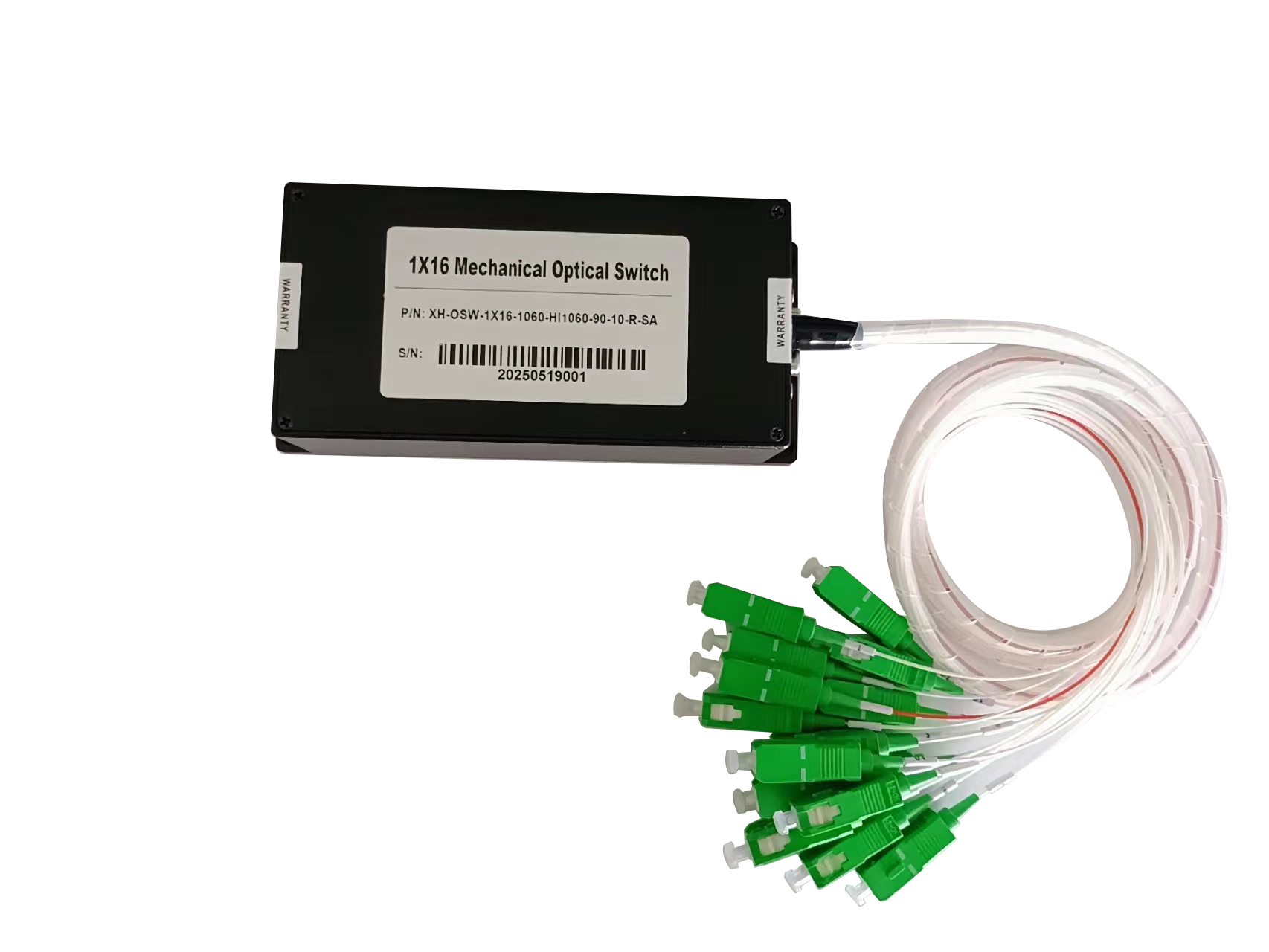Optical Switch: The Key Engine for Centralized Remote Monitoring and Testing in Core and Access Networks
With the rapid development of information technology, the complexity of network equipment has continued to rise, especially in the field of optical communications. Optical switches, as a critical optical network device, play an essential role in modern communication systems, particularly in centralized remote monitoring and testing within core and access networks. This article explores the working principle of optical switches, their applications in core and access networks, and how they help achieve centralized remote monitoring and testing.
1. Working Principle of Optical Switch
An optical switch is a device that controls the optical signal path, typically used to switch signal transmission routes in optical fiber networks. Unlike traditional electrical signal switching, optical switches operate directly at the optical layer, offering higher bandwidth and lower latency, making them ideal for large-scale, high-speed network environments.
Optical switches are typically based on different technologies such as MEMS (Micro-Electro-Mechanical Systems), liquid crystals, and microwaves. Common optical switches include 1xN switches, 2×2 switches, and others, which can switch between different routes to meet various network requirements.
2. Role of Core and Access Networks
The core network is the central part of a telecom network, responsible for processing and routing user data traffic. The access network, on the other hand, serves as the bridge between the users and the core network, handling data access and distribution. With the widespread adoption of new communication technologies such as 5G and Fiber-to-the-Home (FTTH), the connections between the core and access networks have become more complex and challenging.
To ensure the efficient operation of the network, real-time monitoring and remote testing are essential. Through centralized management, network operators can effectively manage and maintain large-scale network devices, quickly detect and resolve potential issues, and improve the stability and reliability of the network.
3. Applications of Optical Switch in Centralized Remote Monitoring and Testing
Optical switches, with their flexible optical signal routing capabilities, provide strong support for centralized remote monitoring and testing within core and access networks. The following are several application scenarios of optical switches in this area:
* Optical Path Switching and Network Protection
Optical switches can automatically switch optical paths based on preset policies, ensuring that traffic can quickly switch to backup paths in the event of equipment failure. Especially at key nodes between the access and core networks, optical switches provide multi-path routing capabilities, offering network reliability and redundancy.
* Remote Testing and Fault Diagnosis
By deploying optical switches at key nodes in the network, operators can perform remote monitoring and fault diagnosis. Optical switches allow engineers to remotely switch between different optical fiber paths, simulate various network conditions, and conduct performance tests, signal quality analysis, and more. This eliminates the need for manual on-site checks, reducing delays.
* Network Optimization and Capacity Adjustment
With the continuous growth of data traffic, the capacity demands on both the core and access networks are also increasing. Optical switches can dynamically adjust optical path configurations based on traffic needs, thereby optimizing network resource usage and avoiding congestion. Operators can monitor the usage of optical paths in real-time through a centralized control platform and respond quickly to traffic changes.
* Centralized Management and Automated Control
In modern optical networks, optical switches are often integrated with Network Management Systems (NMS), providing a unified control and management interface. Through a centralized control platform, operators can remotely manage and configure optical switches, automatically execute scheduled tasks, network tests, and fault repairs, significantly improving operational efficiency.
4. Advantages of Optical Switch
The use of optical switches in centralized remote monitoring and testing offers several clear advantages:
-
High Bandwidth and Low Latency: Optical switches can handle large amounts of data traffic, meeting the demands of modern high-speed networks.
-
Flexible Configuration and Control: Optical switches support a variety of configurations and control methods, adapting to different network topologies and service needs.
-
High Reliability: Based on optical principles, optical switches are more stable and resistant to interference, allowing for long-term reliable operation in harsh environments.
-
Remote Operation and Automation: Optical switches can be operated remotely through a centralized management platform, reducing human intervention and increasing operational efficiency.
5. Future Development Trends
With the continuous advancement of optical fiber communication technology, the performance and functionality of optical switches are also improving. In the future, optical switches will become more intelligent, supporting advanced features such as self-healing capabilities, automated fault repair, dynamic bandwidth adjustment, and more. Additionally, with the development of 5G and IoT technologies, the demand for optical switches will continue to grow, driving the evolution of switches toward higher speeds, higher density, and lower costs.
6. Conclusion
As an indispensable device in modern optical communication networks, optical switches play a crucial role in enabling centralized remote monitoring and testing within core and access networks. With the continuous advancement of network technologies, optical switches will increasingly contribute to improving network efficiency, ensuring network stability, and optimizing maintenance operations. Through intelligent and automated optical switch solutions, operators will be able to better manage the increasingly complex network environments and achieve more efficient network management and maintenance.

Comments are closed